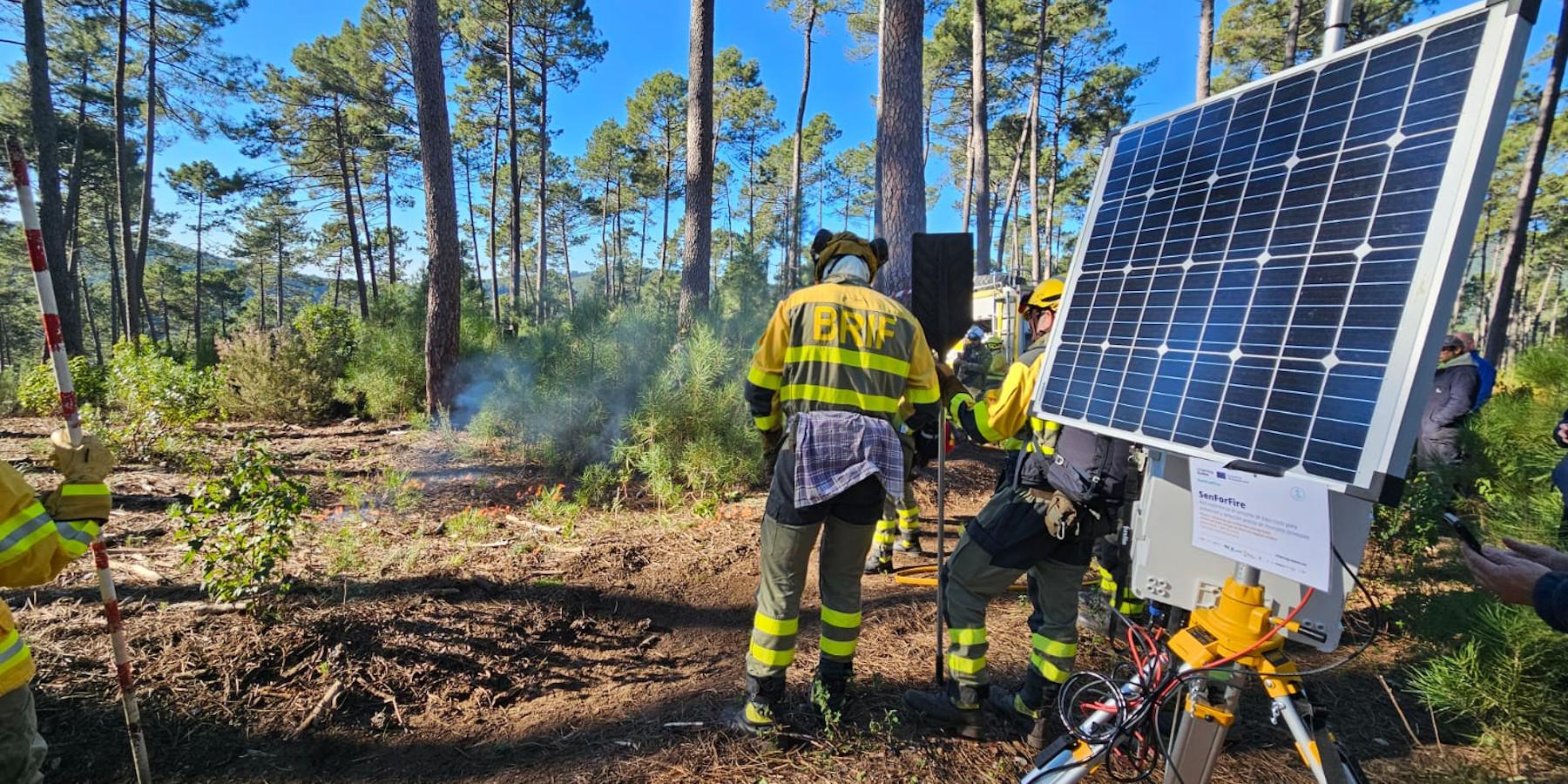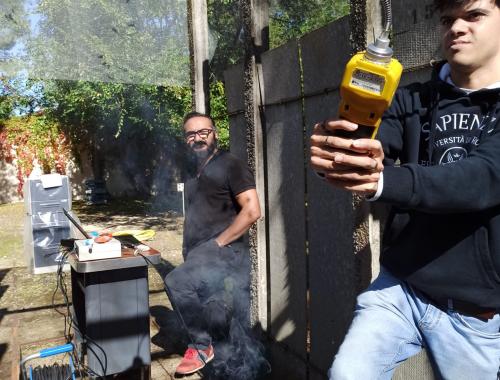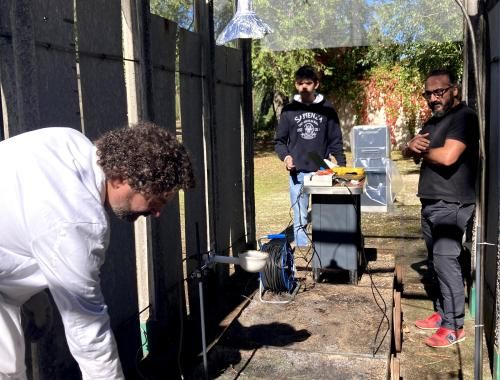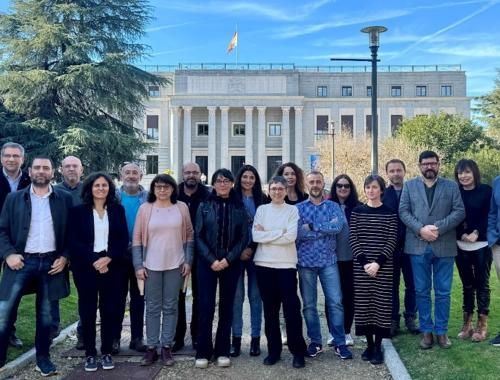New microelectronic sensors for early detection of fires
With the participation of three CSIC centers and financed by the Interreg Sudoe program, this is a significant advance in the early detection of forest fires due to its high sensitivity and rapid response.

The SenForFire project, which brings together research centers and companies in southern Europe, aims to develop wireless sensor networks for the early detection of forest fires. In the last month, the scientific team has carried out the first verification tests of the prototypes.
Several Spanish partners of the project, including the Institute of Microelectronics of Barcelona (IMB-CNM) and the Instituto de Tecnologías Físicas y de la Información (ITEFI), both from the Spanish National Research Council (CSIC), the Universidad de Extremadura (UEx) and the company Ray Ingeniería Electrónica, have designed and manufactured the first series of electronic fire detection modules based on low-cost sensors.
These modules contain the electronics and communications necessary for reading and recording the response of the sensors. In turn, “each sensor is made up of micro and nanoelements, including a semiconductor nanomaterial that interacts with the gaseous species present in the environment and produces electronic signals that correlate with the presence or absence of gases and volatiles in the early stages of a fire, from which alarms or alerts are derived that enable forest fire-fighting operations to act more quickly and effectively,” explains Stella Vallejos, a researcher at IMB-CNM-CSIC and coordinator of the center's contribution to the project.
The team involved in the project “develops new routes to elaborate and integrate semiconductor nanomaterials that provide greater sensitivity and selectivity to the sensor,” she explains. These sensors are manufactured in the Micro and Nanofabrication Clean Room of the IMB-CNM-CSIC, considered a Unique Scientific and Technology Infrastructure (ICTS) by the Ministry of Science, Innovation and Universities.
Jesús Lozano, UEx researcher, explained that “these sensors are capable of detecting gases such as carbon monoxide (CO), carbon dioxide (CO2), hydrogen (H2), nitrogen dioxide (NO2) and ozone (O3), as well as volatile organic compounds (VOCs).” In addition, commercial sensors of various technologies have been employed, including electrochemical (EC), metal oxide semiconductor (MOS), photoionization (PID) and infrared (NDIR), along with optical particulate matter (PM) sensors.
The initial tests, which have sought to evaluate the performance of these devices in different conditions and select the most suitable for early fire detection, have been carried out in the laboratory and in the open-air wind tunnel of the Institute of Forestry Sciences (ICIFOR-INIA, CSIC) in Madrid, in November 2024; as well as in real conditions during a prescribed burn in Arenas de San Pedro, in Ávila, on January 16, 2025. This last test has been carried out in collaboration with the Ministry for Ecological Transition and Demographic Challenge (MITECO), a partner entity of the project.
According to the UEx researcher, “the results have been encouraging, highlighting the great sensitivity and speed of response of the optical particle sensors and some gas sensors." The speed and intensity of response varied according to the detection technology used, the proximity to the fire and the measurement method (with or without air sampling system). In particular, sensors with metal oxide semiconductors (CO, NO2 and O3), electrochemical (CO and VOCs) and photoionization (VOCs) showed better performance compared to infrared CO2 sensors.
“This breakthrough is a key step towards more effective warning systems, capable of detecting fires in their early stages and improving the capacity to respond to the risk of large forest fires facing the territory of southwestern Europe,” concludes the researcher.
SenForFire, European innovation
Funded by the Interreg Sudoe 2021-2027 program, SenForFire brings together a multidisciplinary team to design technological solutions to prevent and detect forest fires more effectively. Its partners include research centers (IMB-CNM, ITEFI and INIA-ICIFOR of CSIC; CIRIMAT and LAAS of CNRS), international universities (Extremadura, Évora, Coimbra and Toulouse), meteorological and detection agencies (AEMET and AR+I) and companies specialized in environmental monitoring (Ray Ingeniería Electrónica and Arantec).
It is also supported by public administrations at different levels, from MITECO to the Junta de Extremadura, the Junta de Castilla y León, the Diputación de Ávila and local entities such as the Municipality of Fundão and the Intermunicipal Community of Alto Minho. This collaborative approach seeks to protect ecosystems and reduce the impact of fires in the Sudoe area, which covers Spain (except the Canary Islands), mainland Portugal, southern France and Andorra.
Gallery
- Researchers Stella Vallejos, Murat Güneş and Joel Perez testing microelectronic sensor for forest fire detection in laboratory.
- Measuring device for microelectronic sensor for forest fire testing in pilot area.
- Researchers Murat Güneş and Joel Perez testing the sensor.
- Researchers Murat Gunes and Joel Perez testing.
- Group photo of the start of the project in March 2024. From IMB-CNM are Stella Vallejos, Llibertat Abad and Marc Salleras.
- SenForFire team in the Andorra pilot zones in September 2024, with Stella Vallejos and Llibertat Abad.
- Pilot zone for testing in St Julià de Llòria, Andorra, in September 2024.
- SenForFire project team meeting in Andorra in September 2024.












